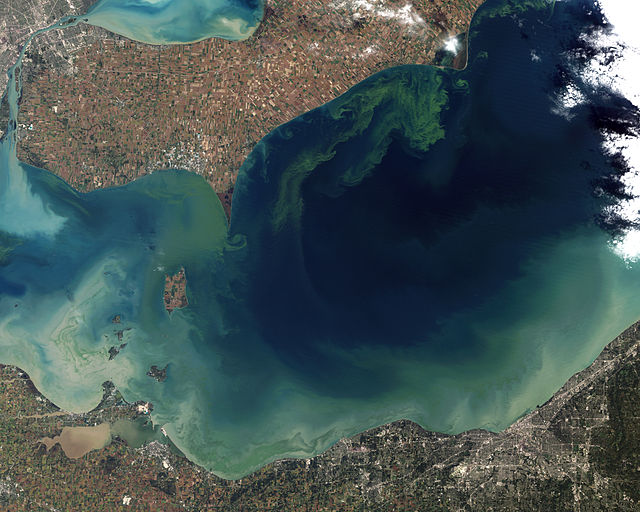Microcystins—or cyanoginosins—are a class of toxins produced by certain freshwater cyanobacteria, commonly known as blue-green algae. Over 250 different microcystins have been discovered so far, of which microcystin-LR is the most common. Chemically they are cyclic heptapeptides produced through nonribosomal peptide synthases.
Lake Erie in October 2011, during an intense cyanobacteria bloom
A culture of M. aeruginosa, a photosynthesizing bacterium
Cyanobacteria, also called Cyanobacteriota or Cyanophyta, are a phylum of autotrophic gram-negative bacteria that can obtain biological energy via photosynthesis. The name 'cyanobacteria' refers to their color, which similarly forms the basis of cyanobacteria's common name, blue-green algae, although they are not scientifically classified as algae. They appear to have originated in a freshwater or terrestrial environment.
Cyanobacteria
Cyanobacteria are found almost everywhere. Sea spray containing marine microorganisms, including cyanobacteria, can be swept high into the atmosphere where they become aeroplankton, and can travel the globe before falling back to earth.
Prochlorococcus, an influential marine cyanobacterium which produces much of the world's oxygen
Unicellular and colonial cyanobacteria. scale bars about 10 μm






